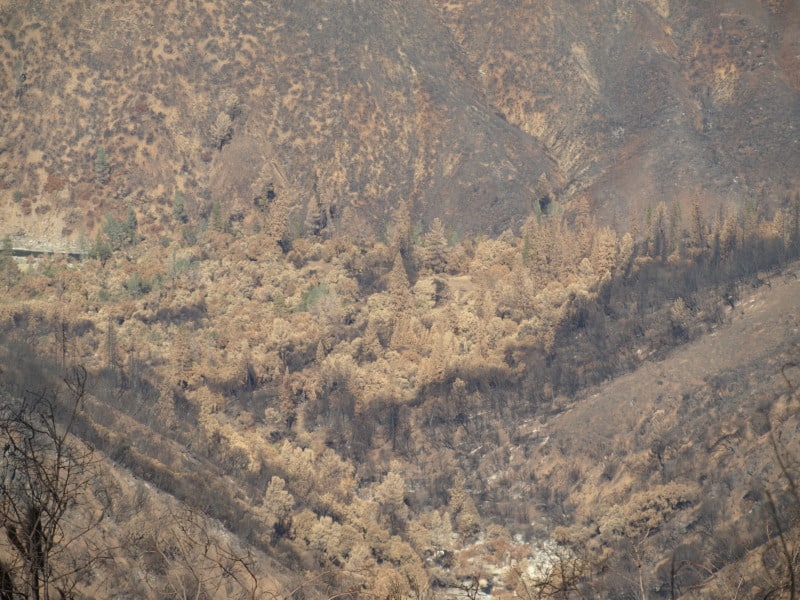One of the great things about this business is that the issues pretty much stay the same over time. This is an interesting report and even-handed. That’s a lotta piles. Conceivably if we’d used the piles for energy (or anything else), we would have fewer particulates in the air. Good for health, good for the environment?
GOLDEN — Trying to prevent catastrophic wildfires, federal crews torched more than 40,000 piles of dead wood this past year in snow-laden Colorado forests.
And state health authorities may allow more controlled burns over broad areas. The Colorado Department of Public Health and Environment has agreed to expand an experiment that relaxes smoke permitting so that burn crews can operate more freely.
While controlled fires that mimic natural cycles can protect communities and revive dying forests, they also produce smoke at potentially unhealthy levels, state air quality officials warned in a meeting last week.
Drip torch operator Chris Spivey of the U.S. Fish and Wildlife Service does prescribed burning at the Rocky Mountain Arsenal National Wildlife Refuge on
Drip torch operator Chris Spivey of the U.S. Fish and Wildlife Service does prescribed burning at the Rocky Mountain Arsenal National Wildlife Refuge on Wednesday. (Hyoung Chang, The Denver Post)
But forest managers are compelled to act because the 18,544 acres treated with controlled fire in 2013 still does not come close to the 1 million acres that the U.S. Forest Service recommends. For years, Forest Service experts have argued that state limits on open burning are shortsighted, shielding people who chose to live in woods from occasional smoke at the expense of long-term safety and ecological health.
Health officials said lawyers are reviewing how far the state can go in allowing more burns. On one hand, Colorado is obligated to clean its air to meet the national health standards. On the other, massive wildfires threaten watersheds and the people living near forests.
As firefighting agencies predicted a mild early wildfire season in the Rocky Mountain region, the top federal air quality overseer encouraged Colorado’s emerging approach.
The Fire Line
The Fire Line
Watch The Fire Line: Waldo Canyon, Black Forest and how wildfires are changing in Colorado and the American West
“You’re trying to do burns in smaller chunks, under favorable conditions, so that you avoid larger burns under unfavorable conditions,” said smoke management specialist Mike Broughton of the U.S. Fish and Wildlife Service, who monitors emissions from fires nationwide.
More of the controlled burns will boost both ecosystems and safety, Broughton said. “It makes it easier to keep a wildfire from becoming a massive wildfire.”
Recent CDPHE air tests found that even controlled burns on less than 50 acres produce particulate air pollution near homes at levels exceeding health standards. Average particulate levels reached 257 micrograms per cubic meter during recent burns, seven times higher than the 35-microgram federal standard.
“They are certainly troubling numbers. … We still have a responsibility to protect public health,” CDPHE smoke program leader Pat McLaughlin said.
However, the huge uncontrolled wildfires that increasingly plague Colorado also produce heavy smoke. The 215-square-mile Hayman fire led to 2002’s worst air quality in Denver even though it was burning 100 miles away. Smoke from the 2012 High Park and Waldo Canyon fires put particulates at 67 micrograms in Fort Collins and Colorado Springs — nearly as bad as Beijing.
Widespread burningThis winter, significant snow enabled widespread burning of timber slash piles. On the Arapaho and Roosevelt National Forest west of Boulder and Fort Collins, burn crews torched more than 22,000 piles in January and February, adding to a statewide 2013 total topping 40,000, officials said.
Rocky Mountain National Park crews, burning 6,500 piles since 2012, are on pace to eliminate a backlog, said Mike Lewelling, the park’s fire management officer.
But he and other forest managers say that, beyond pile burning and mechanical thinning, they’d like to be able to conduct more controlled burns over wide areas.
Since 2010, CDPHE has cut the number of smoke permits issued for nonpile controlled burns to 72, down from 140. The Colorado State Forest Service hasn’t done any controlled burns due to liability concerns after one in 2012 escaped boundaries and became the Lower North Fork fire, which killed three people.
A CDPHE experiment in greater flexibility began in November when air-quality officials issued customized smoke permits to federal foresters near Winter Park.
This allowed burning of 6,600 piles of dead wood over eight nonconsecutive days, including 1,800 on a single day, state air division spokesman Chris Dann said.
Local forest managers had the responsibility of conducting burns under wind, moisture and temperatures that minimized smoke.
Standard state permits limit open burning to 250 piles a day.
Custom permits now will be offered at other locations, state officials said. Forest managers must agree to install air-monitoring devices to measure smoke, positioned in places state air experts approve.
Forest Service Sulphur District Ranger Craig Magwire, who oversaw efforts to burn when wind was right to disperse smoke, said he got support from community leaders.
“If you’re burning more piles, you’re putting more particulate matter into the air. But people got the concept of what we are trying to do,” Magwire said. “They realize there will be short-term air impacts. But, in general, they understand the greater good.”


